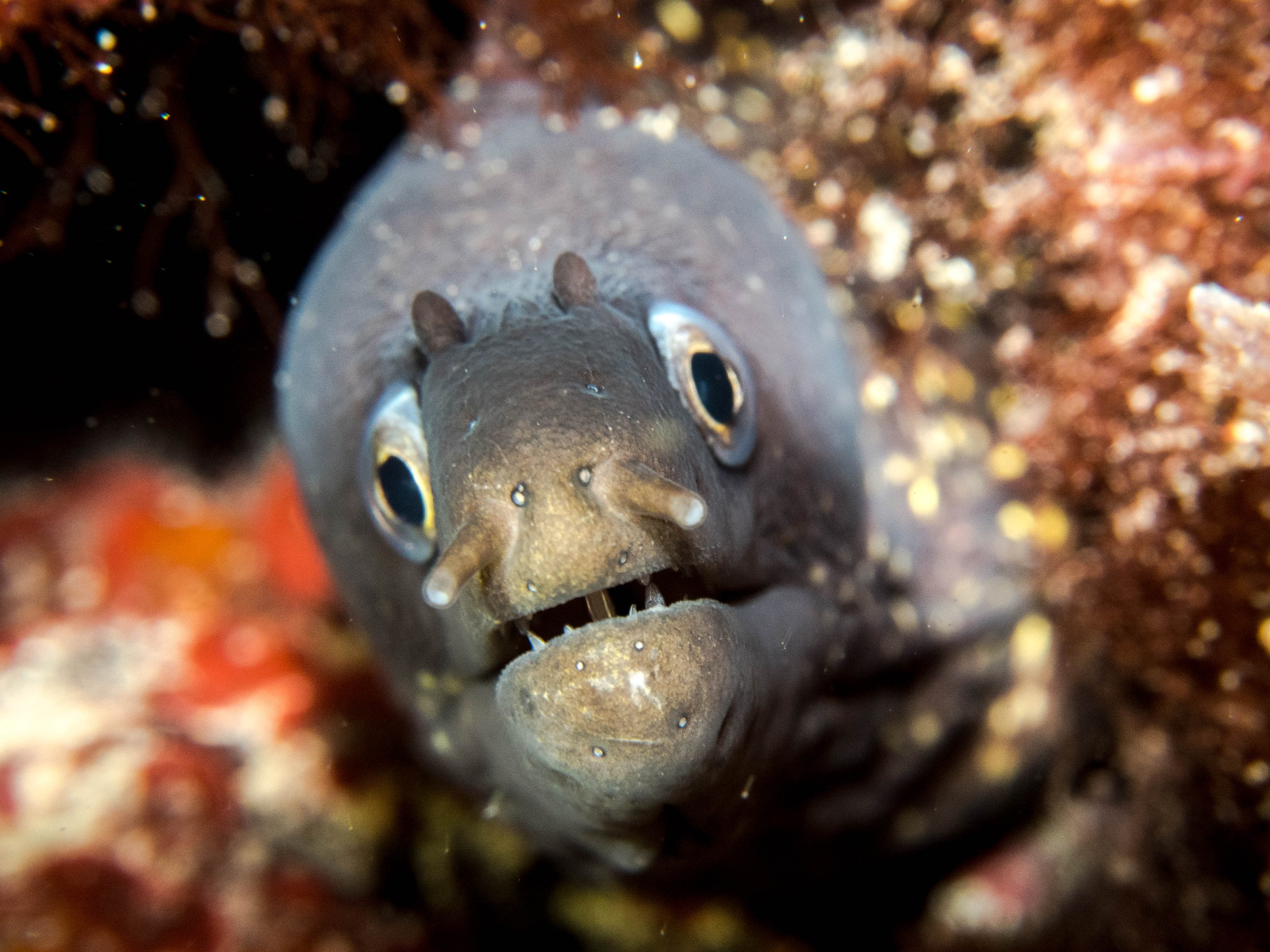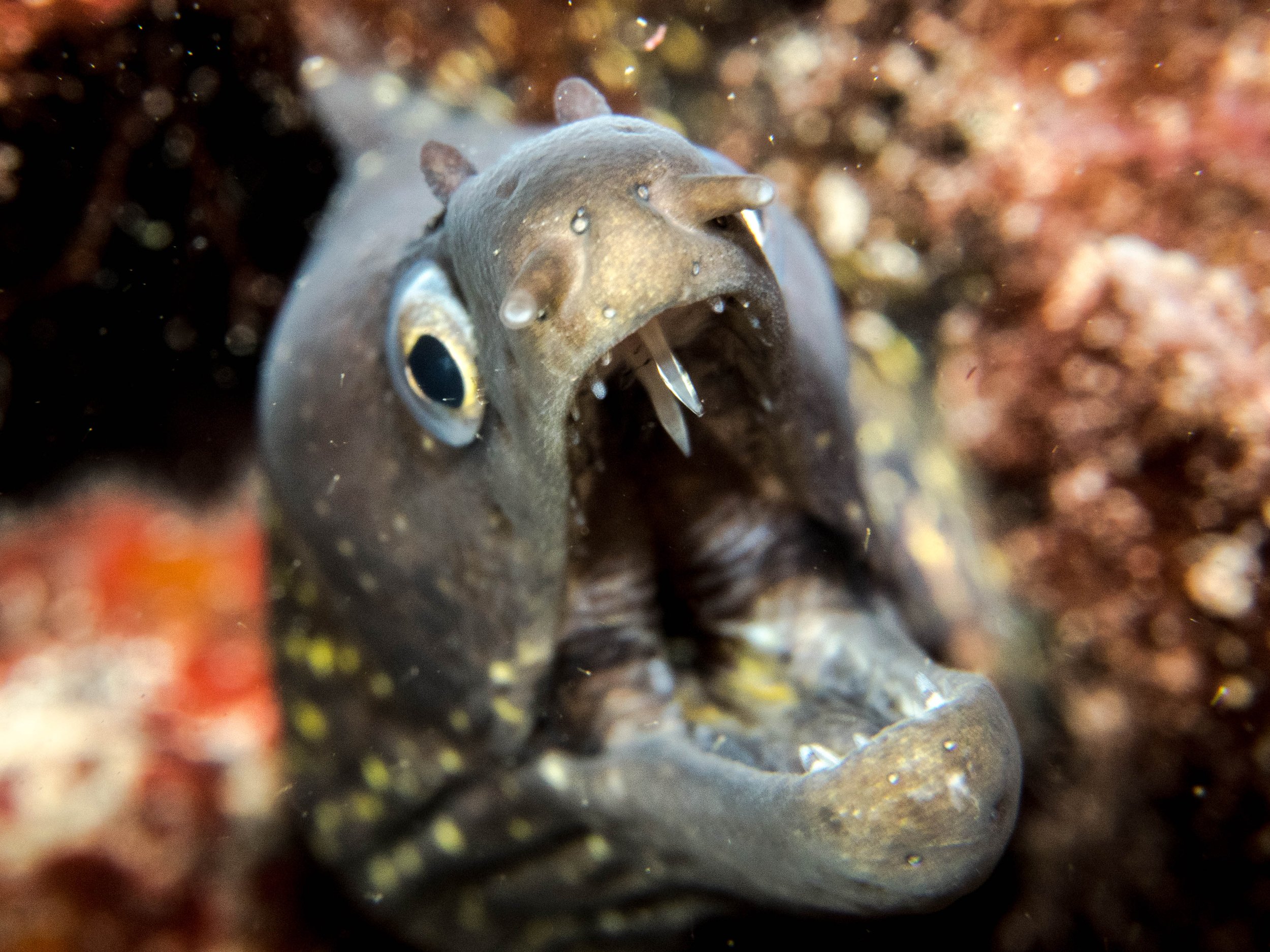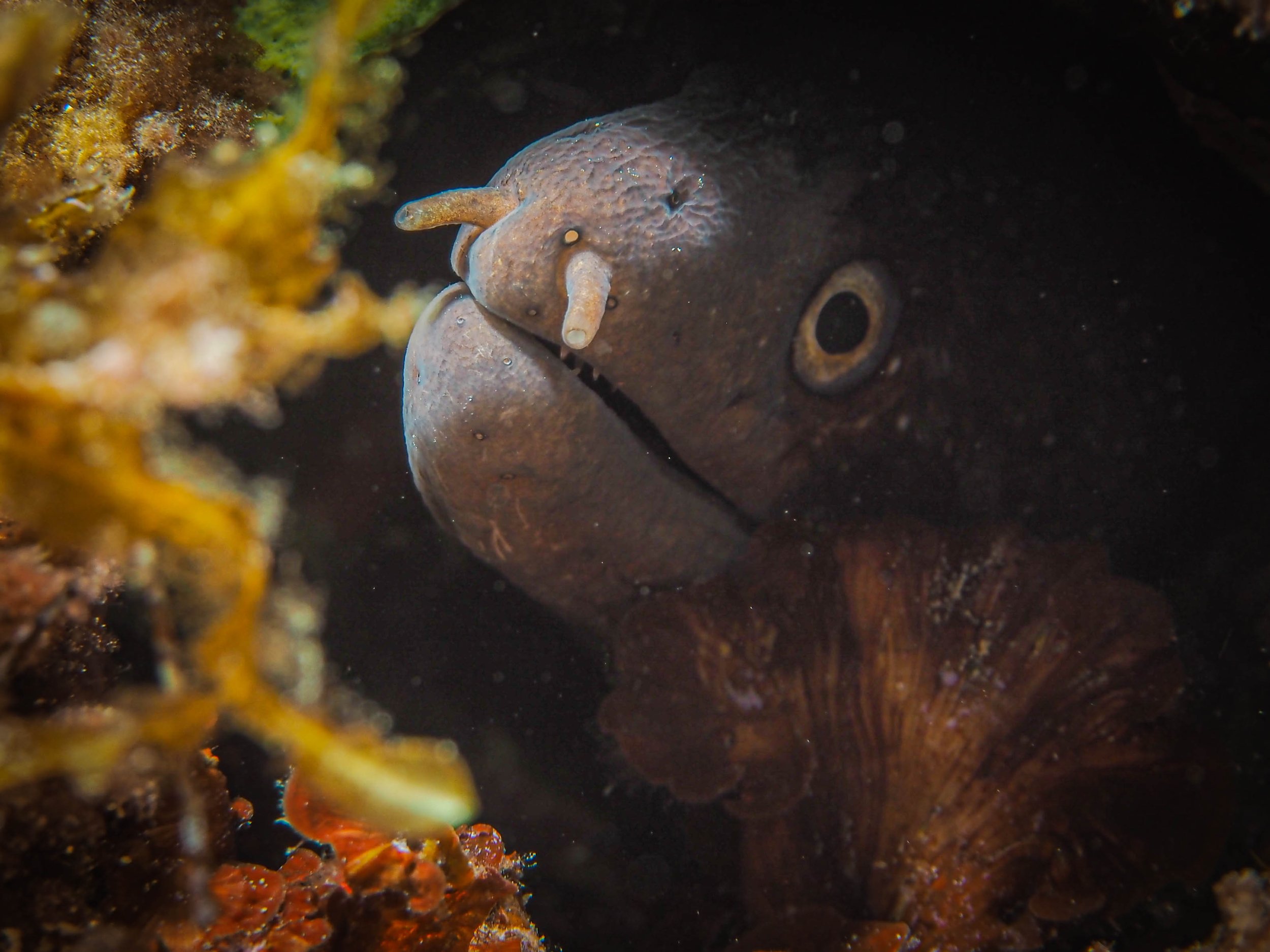Moray Eels
The Mediterranean eel is one of the most dangerous fish of the Mediterranean
This eel, also known as the Roman eel (Muraena Helena), can reach lengths of 1.5 meters and weigh over 15 kg.
While it is not inherently aggressive and rarely attacks, the Muraena may be quick to bite if it is threatened or frightened or if disturbed in its natural habitat such as rock crevices.
A bite from this eel can inflict severe damage as its teeth are jutting backwards and it has a secondary jaw known as pharyngeal jaw to tear flesh. When the moray bites its prey, it first bites normally with its oral jaws, capturing the prey. Immediately thereafter, the pharyngeal jaws are brought forward and bite down on the prey to grip it; they then retract, pulling the prey down the moray eel's gullet, allowing it to be swallowed.
Also the bite can cause further damage from the mildly toxic slime on the skin and mouth which cause red blood cells to clump
Moray eels have very poor eyesight so they rely on their incredible sense of smell to catch their food. Because of this poor eyesight, there are some reports of divers loosing fingers when feeding morays as they cannot see where the food finishes and the fingers begin.
Those two small appendages on the moral eel’s snout are called nare.
While nostrils in other animals are connected to both gut and lungs, the nare in fish are not connected to gills. In fact they do not even penetrate the skull, but their function is the same as nostrils, smelling.



























